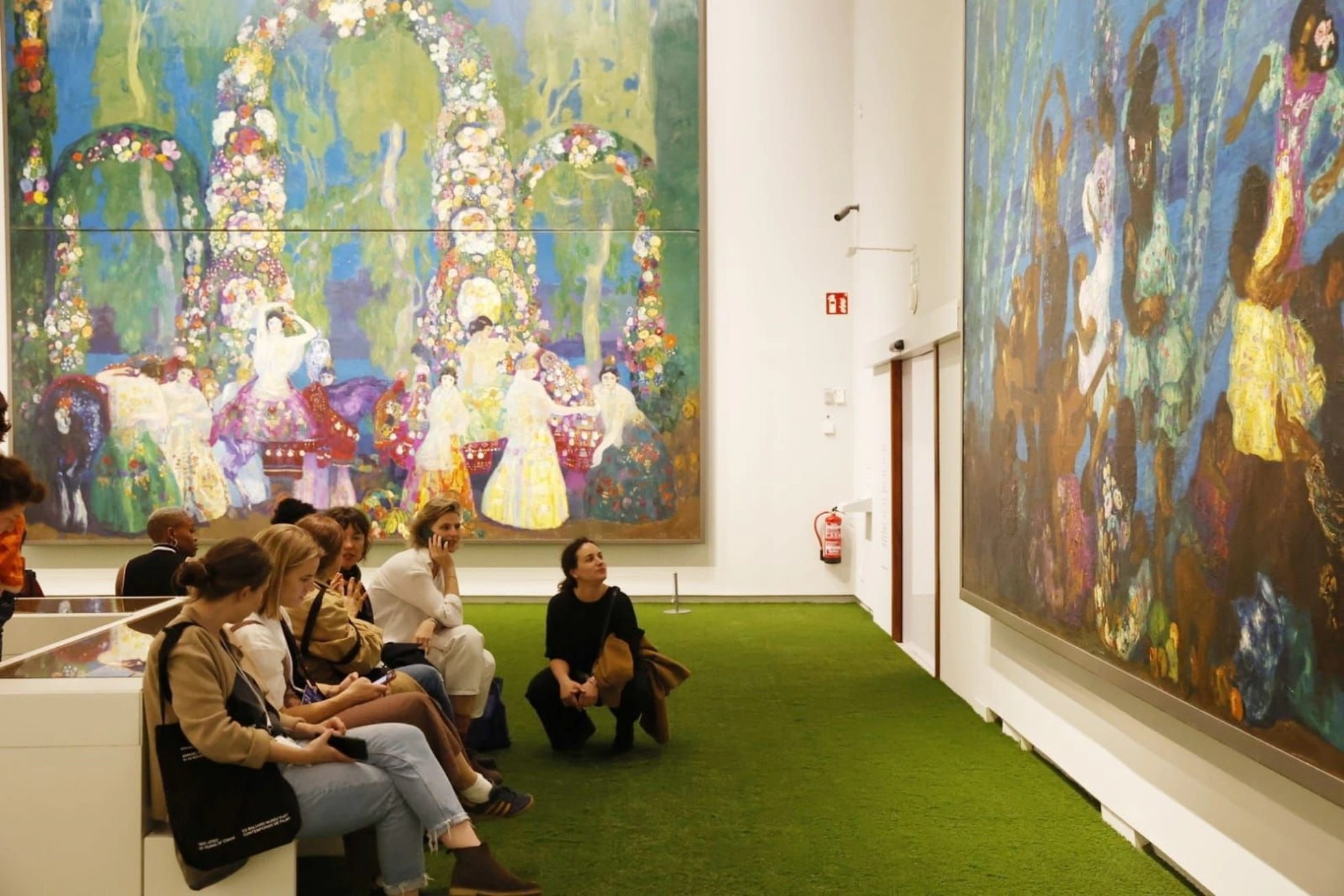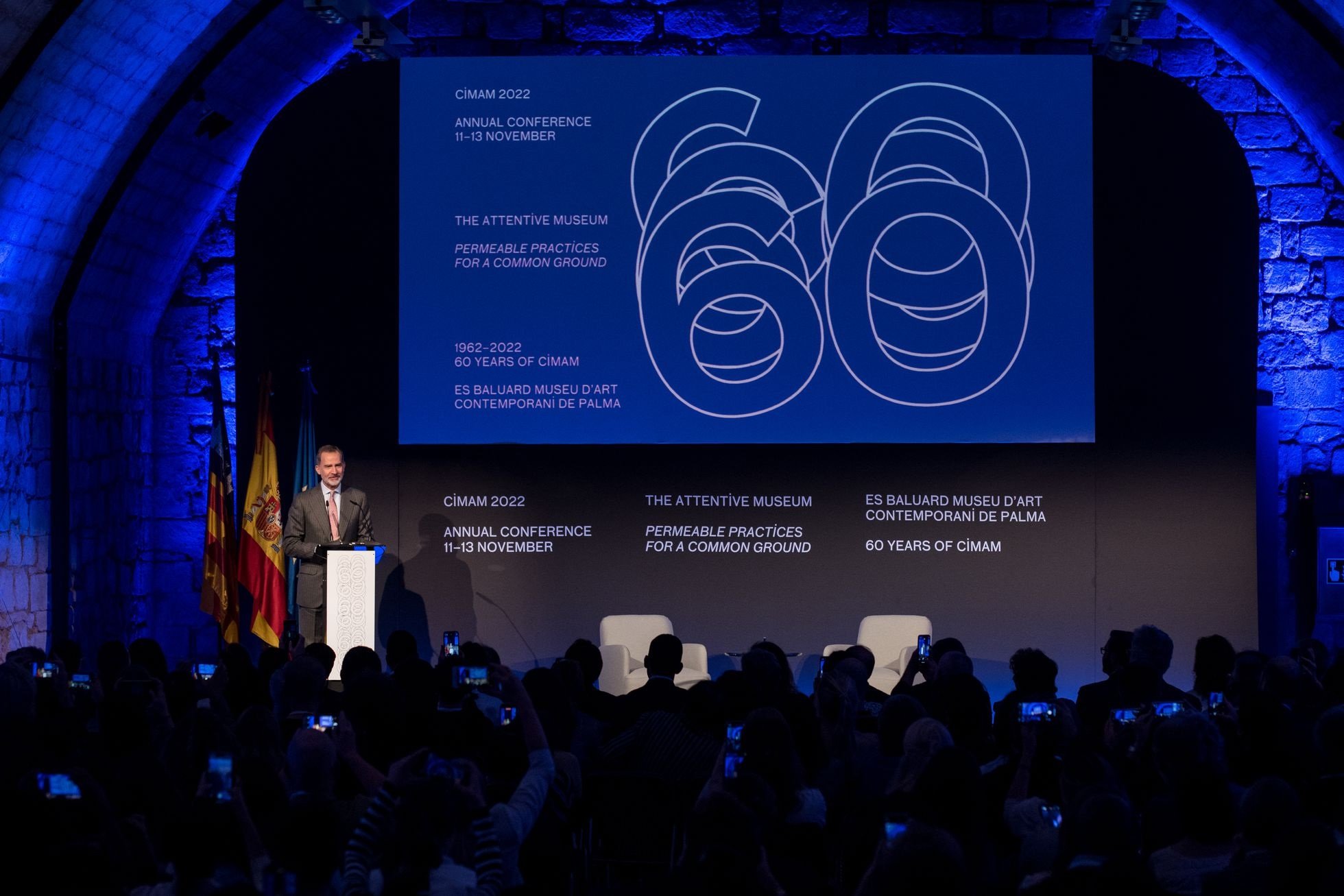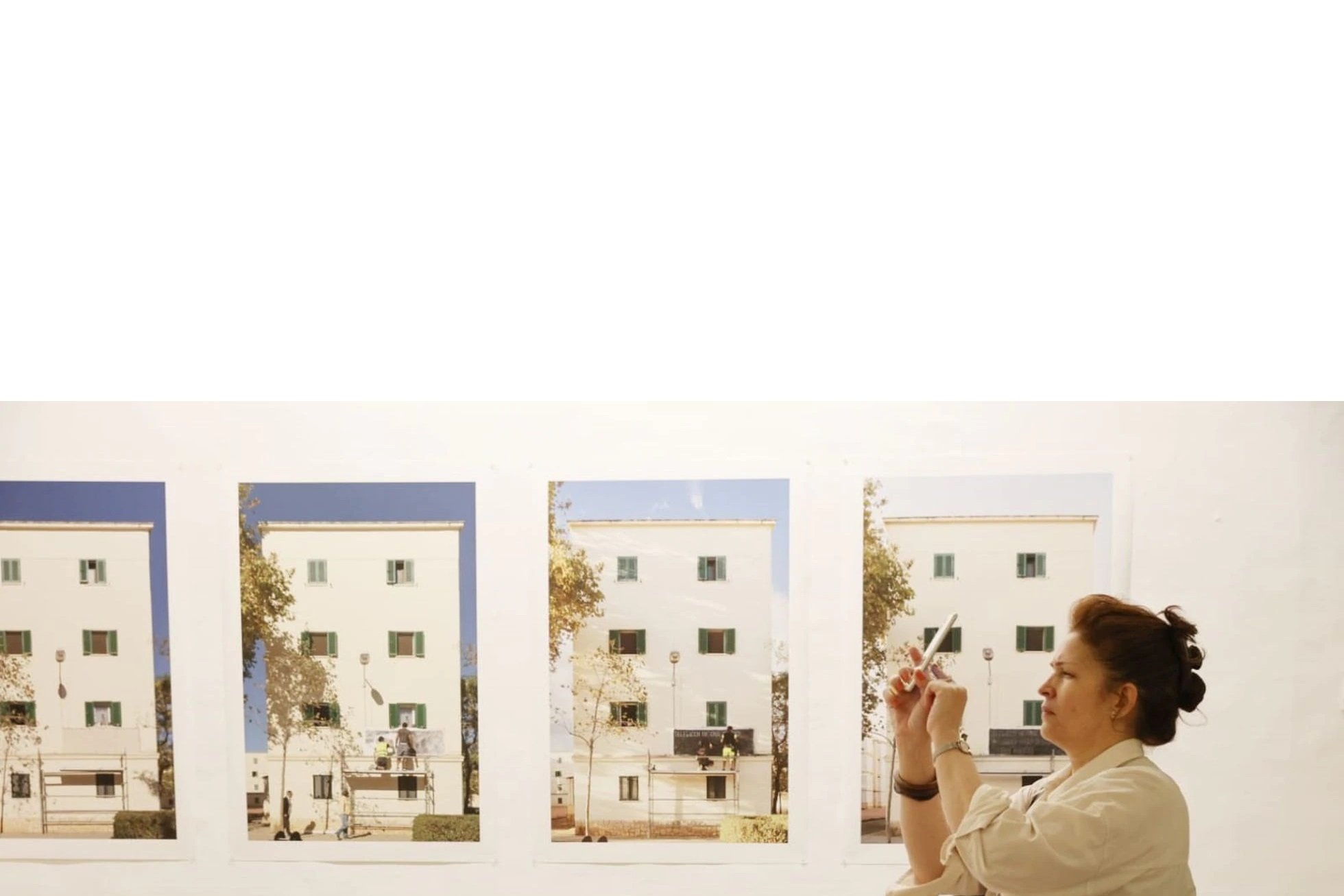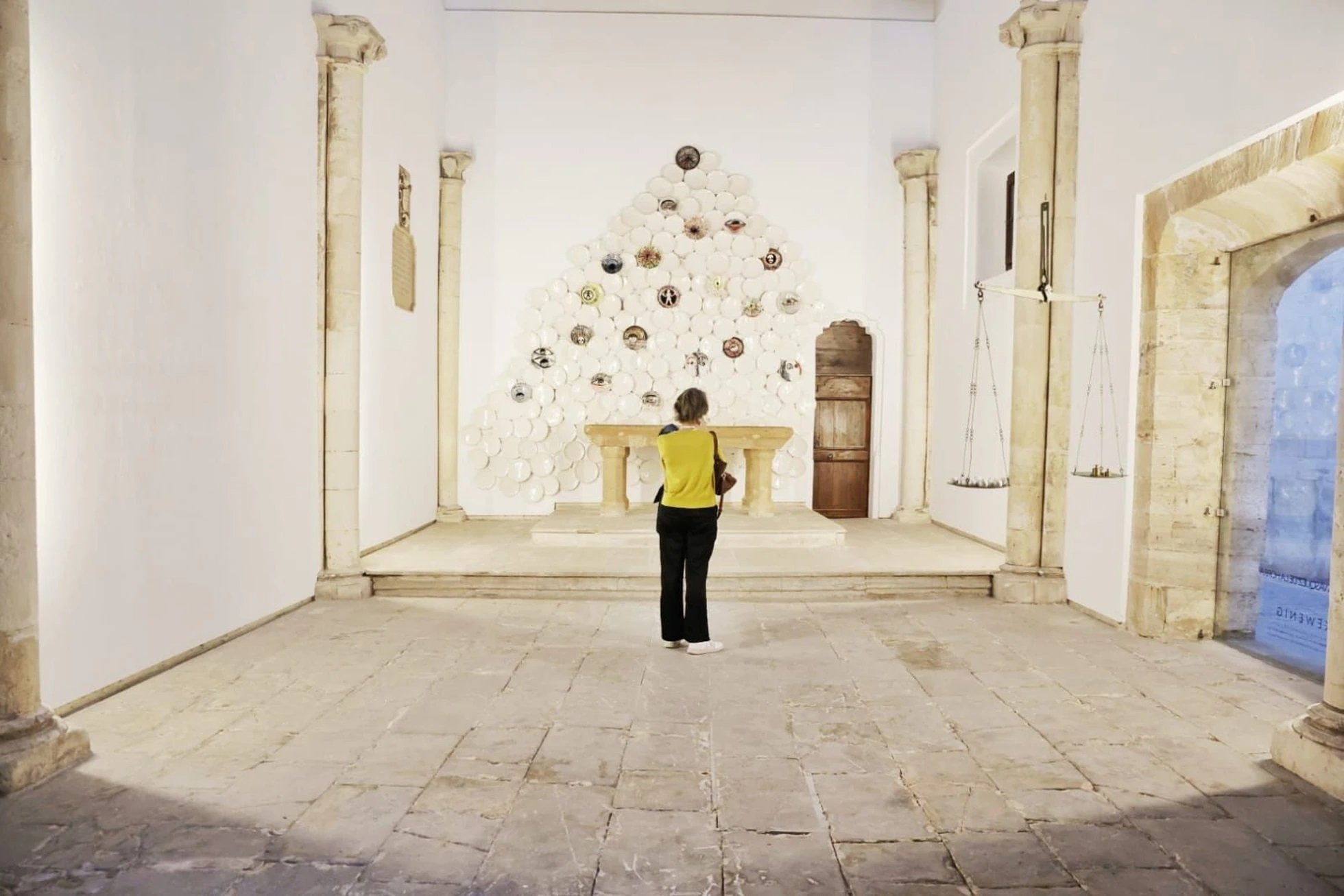In search of another model for museums: rethinking their role beyond art

Written by Ángeles García, and originally published by El País, 14 November 2022.
The word colonialism has long seemed to be linked to museums as if it were their inevitable instantaneous bomb of destruction. The most simplistic vision points to the emptying of museums for the sake of claims, in Spain's case, have been made in dribs and drabs. The term has a much broader field of action and has to do with territorial conquests, gender impositions, political totalitarianism, or economic limitations.
Each museum center has its own world, and the solutions are always complicated. This was repeatedly affirmed during the three days of debates that consumed the 54th CIMAM conference held in Palma de Mallorca from Friday to Sunday. CIMAM is the only worldwide network of modern and contemporary art museums representing the profession's interests. Born as an independent committee of the International Council of Museums (ICOM), its decisions are not binding on governments but are made known internationally.
Restrictions due to the coronavirus did not prevent last year's conference from being held in Gdansk (Poland), although the ultraconservative climate of the country did not contribute to a conference in which climate change and xenophobia were highlighted as the main concern. The opposite has been the case this time, since the candidacy of Imma Prieto (Barcelona, 47 years old), director of Es Baluard, managed to put Palma on the international map of museums. Mallorca's location between Africa, Europe, and the Middle East proved unbeatable. The Balearic community has supported the candidacy, the Ministry of Culture and Sport, and King Felipe VI.

Braving the heavy rains of the opening day, more than 200 professionals have traveled to the island to discuss what needs to be changed urgently. The basic script had been sketched out by the hostess herself, Imma Prieto; the director of the Reina Sofia, Manuel Borja-Villel and the independent curator and only Spanish member of CIMAM's board of directors, Agustin Perez-Rubio.
The governance of each and its many difficulties was the first day's theme. The president of the assembly, Mami Kataoka (Nagoya, 57), director of the Mori Art Museum in Tokyo, called for constant vigilance against those who want to intervene in the internal decisions of museums. From the rostrum, she referred to both politicians and private companies that, with apparent disinterest, tend to influence the programming of art centers.

The farewell of Frances Morris
At ground level claimed that same vigilance Frances Morris (London, 63 years old), who has just announced that in April she will step down as director of the Tate Modern, a position she has held since 2016. Linked to the museum since 1987, Morris was the first woman to govern the most visited contemporary art institution in the United Kingdom (5 million people a year). She leaves, she confesses to EL PAÍS, to do nothing special except live. "I don't think the glass ceiling I had broken will be recomposed. I am leaving because I believe that people of my age and experience have the obligation not to block and leave the way open for younger people to take up positions of responsibility. We cannot stay in office forever".
Meskerem Assegued against segregation
Reclaiming historical works is not a widespread ambition among museum heads outside the European orbit. A perfect example is in the words of Meskerem Assegued (Addis Ababa, Ethiopia, 56), director of Zoma Contemporary Art Center, an artists' residency with locations in Addis Ababa and Harla. She does not subscribe to the claims of works from African countries to European nations: what really outrages her is that some Western museums maintain segregation with spaces for African, Asian, or any other art.
Refining socialist realism
"The attentive museum", the motto of this conference, invites us to think about whether it is possible to develop institutional practices that make sense for the whole of contemporary society, even in these times of conflict and war. Ukrainian artist Lada Nakonechna (Dnipro, 41 years old) has been working for eight years on self-decolonization. A resident of Hamburg since the beginning of the war, she tells how Soviet communism also used museums to unify thinking. "They ordered which artists and which works should be in Ukrainian collections. That's how they built our social identities in the Soviet era." With a group of artists, they have revised those impositions of the harshest socialist realism. "There are two currents," she says. "One is in favor of making all those works disappear. Another current, to which I subscribe, prefers to photograph, archive, and store all these works."
The artist assures that the artworks are not going out to other countries to be kept for the duration of the conflict. "They are well hidden in our territory. Our government has not taken care of it. It has been the creators and workers themselves. In general, they care little about art. Just think, there is not a single museum of contemporary art in Ukraine."
Ferreira da Silva's blacklight
Essayist and professor at the University of British Columbia in Vancouver, Denise Ferreira da Silva (Brazil, 60 years old) has made famous her method of reviewing history with the blacklight. She believes that museums have to analyze how they came to be what they are and show their colonial and exploitative past in an undisguised way. All institutions, museums, and universities must investigate their history, make it public, and proceed to do justice.

Picasso and his specters
At the end of the conference, Manuel Borja-Villel, director of the Reina Sofia, referred to those other museums that do not respond to the conventional canon and are a mirror of the society in which they develop. Architect and activist Kike España (Malaga, 34) has been working for 16 years at La Casa Invisible, a social and cultural center deeply rooted in the city of Malaga, which, however, is always facing the threat of eviction by the City Council. "They play with Malaga as a city of museums," explains España, "when the only one that works for them is the Picasso. Around these ghost museums (the Russian, the Pompidou), there is an urban and economic strategy that seeks the expulsion of the neighbors. In the center of the city, around the cathedral, only 3,300 people are registered. That is also colonizing a territory".
The conclusions in this kind of meeting are not usually closed. They are notes on what is to come. Borja-Villel makes his own Gertrude Stein's words, according to which a modern museum is a contradiction in its own statement. Everything has to be rethought and with other categories. The future has to be respectful with the new feminisms, with the queer in the sense that everyone can decide what they want to be. There is no room for impositions. And quoting the philosopher author of the Contrasexual Manifesto, Paul B. Preciado, announces that: "The white, heterosexual, middle-aged man is no longer the standard that dictates the norms of museums".